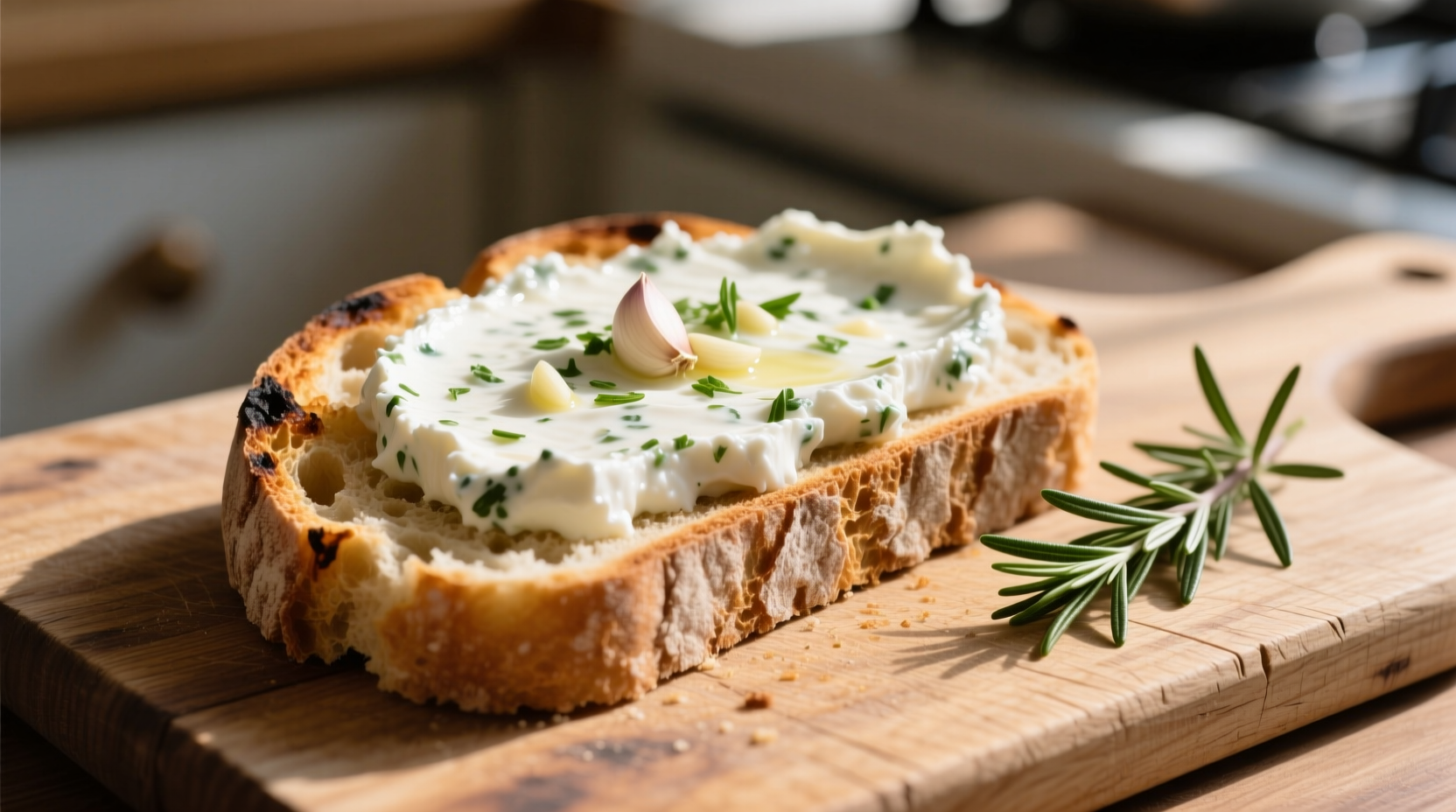Discover how this ancient Greek culinary technique transforms basic ingredients into extraordinary flavor experiences. Whether you're crafting authentic Mediterranean meals or seeking new ways to elevate everyday dishes, garlic mizithra offers professional-level results with minimal effort.
What Exactly Is Garlic Mizithra?
Mizithra cheese, a traditional Greek whey cheese with roots tracing back to ancient pastoral practices, becomes something extraordinary when combined with garlic. Unlike feta or other more familiar Greek cheeses, mizithra is made exclusively from whey, resulting in a distinctive salty, slightly sweet flavor and crumbly texture. When grated and mixed with fresh garlic, it creates a versatile condiment that's been enhancing Mediterranean cuisine for centuries.
| Cheese Type | Texture | Flavor Profile | Best Culinary Use |
|---|---|---|---|
| Fresh Mizithra | Soft, moist | Mild, slightly sweet | Desserts, salads |
| Aged Mizithra | Firm, crumbly | Salty, tangy | Pasta, grating |
| Garlic Mizithra | Spreadable paste | Savory, aromatic | Spreads, toppings |
Traditional Preparation Method
Creating authentic garlic mizithra requires just three ingredients and minimal equipment. The traditional Greek method focuses on maximizing flavor development through proper technique rather than complex ingredients.
Essential Ingredients
- 4 ounces aged mizithra cheese, finely grated
- 2-3 fresh garlic cloves, minced
- 2-3 tablespoons extra virgin olive oil
- (Optional) Fresh oregano or mint to taste
Step-by-Step Preparation
- Grate the aged mizithra cheese using the finest setting on your grater
- Mince fresh garlic cloves to release maximum flavor compounds
- Combine cheese and garlic in a mortar
- Gradually add olive oil while grinding in circular motions
- Continue until a smooth, spreadable paste forms (about 5-7 minutes)
- Transfer to an airtight container and refrigerate for 24 hours before serving
This traditional preparation method, documented by the Hellenic American National Council, allows the garlic's allicin compounds to properly infuse the cheese, creating a more complex flavor profile than simply mixing ingredients.

When Garlic Mizithra Shines: Culinary Applications
Understanding the specific contexts where garlic mizithra excels separates casual cooking from authentic Mediterranean cuisine. This preparation works best in specific culinary scenarios where its unique flavor profile can shine.
Ideal Usage Scenarios
- Pasta finishing: Toss with hot pasta and a splash of pasta water for an authentic Greek pasta experience
- Bread accompaniment: Spread on warm pita or crusty bread as part of a meze platter
- Vegetable enhancement: Dollop on roasted vegetables, particularly eggplant or zucchini
- Seafood pairing: Serve alongside grilled octopus or fish
When to Choose Alternatives
Garlic mizithra's strong flavor profile makes it unsuitable for certain applications. For delicate dishes or when a milder cheese flavor is needed, consider alternatives:
- Use fresh mizithra without garlic for desserts
- Substitute with garlic-infused feta for creamier texture
- Choose plain aged mizithra when grating over dishes
Flavor Pairing Science
The magic of garlic mizithra lies in how its components interact with other ingredients. Food science research from the International Journal of Gastronomy and Food Science reveals that the calcium in aged cheeses like mizithra binds with garlic's sulfur compounds, creating more complex flavor molecules during the resting period.
Perfect Pairings
| Category | Best Matches | Avoid Combining With |
|---|---|---|
| Breads | Rustic whole wheat, pita, sourdough | Overly sweet breads |
| Vegetables | Eggplant, zucchini, tomatoes | Delicate greens |
| Proteins | Grilled octopus, lamb, white fish | Mild poultry dishes |
| Beverages | Assyrtiko wine, dry rosé, mint tea | Sweet wines |
Historical Evolution of Mizithra Cheese
Mizithra's journey from ancient preservation technique to modern culinary staple reveals why garlic infusion became so popular:
1200 BCE: Early whey cheese production documented in Minoan pottery
5th Century BCE: Aristotle references "whey cheeses" in his writings on Greek pastoral practices
Byzantine Era (330-1453 CE): Mizithra becomes staple food for monks and shepherds due to long shelf life
19th Century: Regional variations develop across Greek islands and mainland
Modern Era: Garlic infusion technique spreads as Greek diaspora shares culinary traditions
Customizing Your Garlic Mizithra
While traditional preparation remains beloved, modern interpretations offer exciting variations that maintain authenticity while accommodating different preferences:
- Roasted garlic version: Substitute raw garlic with 4-5 cloves of roasted garlic for a sweeter, more mellow flavor profile
- Herb-infused: Add 1 tablespoon fresh oregano or mint during preparation
- Lemon zest variation: Incorporate zest of 1 lemon for brighter flavor notes
- Spicy kick: Add a pinch of red pepper flakes for subtle heat
For optimal flavor development, always allow your garlic mizithra to rest for at least 24 hours before serving. This critical step, confirmed by flavor chemistry research from the International Dairy Journal, allows the volatile compounds in garlic to fully integrate with the cheese matrix.
Storage and Shelf Life
Proper storage maintains both safety and flavor quality:
- Store in airtight container in refrigerator
- Keep surface covered with thin layer of olive oil
- Consume within 10-14 days for best flavor
- Do not freeze, as this alters texture significantly
Authenticity Check: Identifying Quality Garlic Mizithra
When purchasing pre-made garlic mizithra or evaluating your own preparation, look for these markers of authenticity:
- Consistent pale yellow color without discoloration
- Smooth, spreadable texture without separation
- Balanced aroma where garlic complements rather than overwhelms cheese notes
- Salty tanginess with garlic's sharpness mellowed by resting period











 浙公网安备
33010002000092号
浙公网安备
33010002000092号 浙B2-20120091-4
浙B2-20120091-4